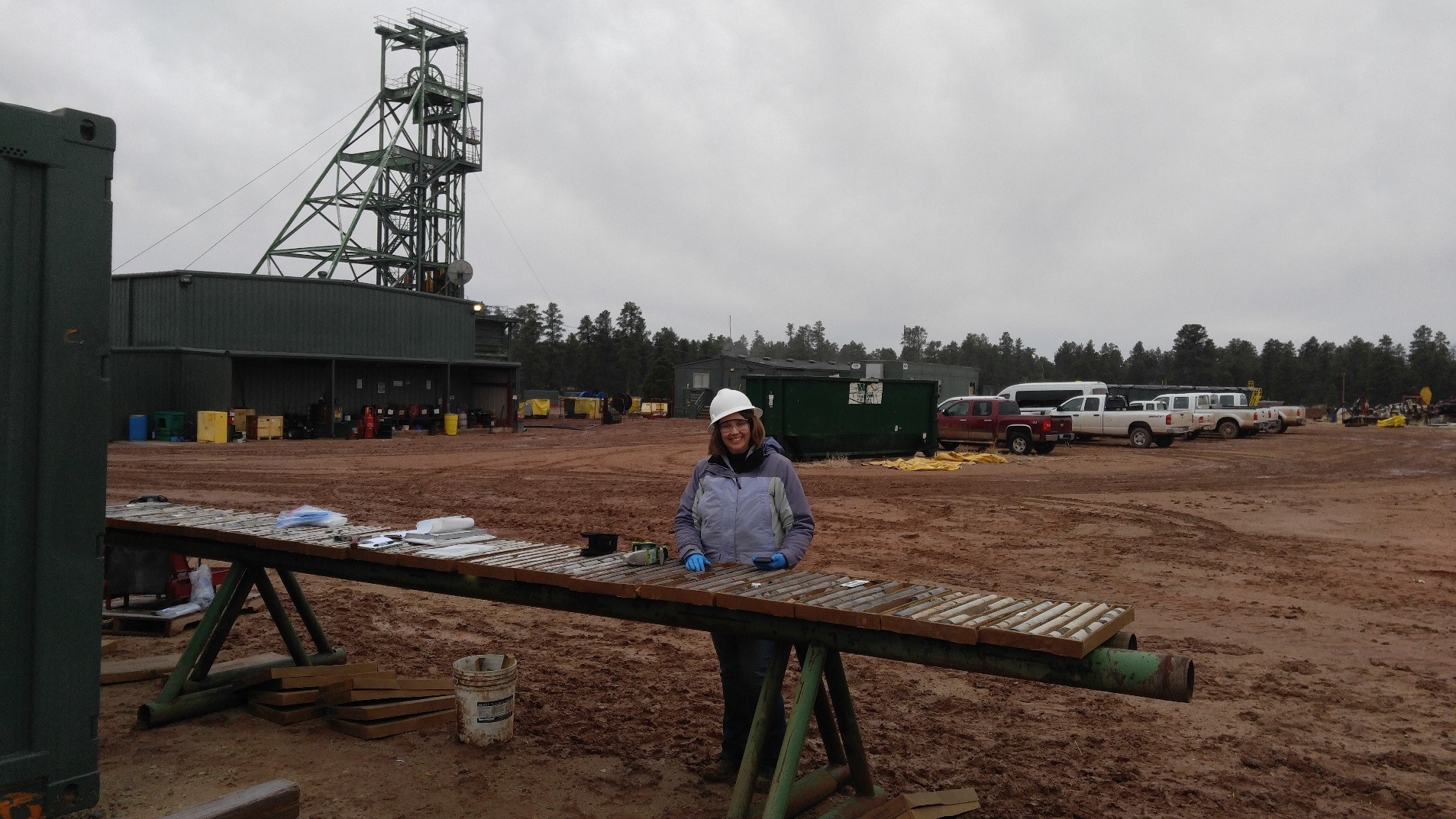The uranium ore bodies found in some of the breccia pipes of northern Arizona contain a complex mixture of dozens of minerals. As a result, the chemistry of these uranium deposits is also complex. Intergrown with the uranium minerals are many metal-bearing minerals, causing enrichments in arsenic, cobalt, copper, lead, molybdenum, nickel, and zinc. These metals, as well as uranium, can have toxic effects on wildlife and humans through various pathways (such as ingestion, absorption from waters or fine particles, and inhalation of dusts).
First Objective
Determine the unique chemical and mineral content of the uranium deposits of northern Arizona before they are excavated and brought to the surface.
This information is critical to determine if the uranium mining operations have been sources of metal contributions to surface environments or groundwaters. Mining activities combined with natural processes (rain, wind, evaporation) can disperse and concentrate uranium and other metals in mine waste materials, soils, dusts, groundwaters, natural spring waters, and mining-related waters on site. For example, uranium, arsenic and the other metals noted above are enriched in the breccia pipe deposits, but these metals typically occur in low concentrations in the rocks and soils of the region ("the background"). Thus, a sample that exhibits elevated concentrations of uranium and (or) arsenic may indicate influences of mining, while lower concentrations suggest a lack of influence.
Several analytical techniques are used to determine uranium deposit metal content and mineralogy.
Second Objective
Determine the solubility of the ore minerals and their capacity to release metals into waters.
A mineral may contain one or more metals that can be potentially toxic, but the structure of the mineral and the chemistry of the interacting water determine whether the mineral will release its metals. This ability will be tested by the leaching of ore samples in waters and measuring the resulting chemistry of the leach solutions. Characterizing the mineralogy and chemistry of the uranium source rock allows one to explain the metal concentrations that are found in waters, soils, or an organism.
Related Product
Element concentrations in surface soils of the Coconino Plateau, Grand Canyon region, Coconino County, Arizona: U.S. Geological Survey Open-File Report 2016–1160
Ongoing
Task 1: Distribution and stratigraphic positions of breccia pipes Task 2: Estimate the number of mineralized breccia pipes Task 8b: Continue evaluation/analysis of ore geochemistry from historical and active mines
Bradley S. Van Gosen
Geologist
Central Mineral Resources Team
303.236.1566
bvangose@usgs.gov
Carleton Bern
Research Soil Scientist
Colorado Water Science Center
303.236.6915
cbern@usgs.gov
Kate Campbell-Hay
Research Chemist
Geology, Geophysics, and Geochemistry Science Center
303.541.3035
kcampbell@usgs.gov
| Energy Fuels Incorporated |
